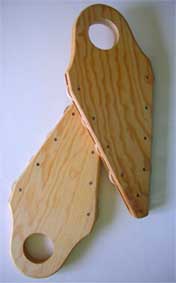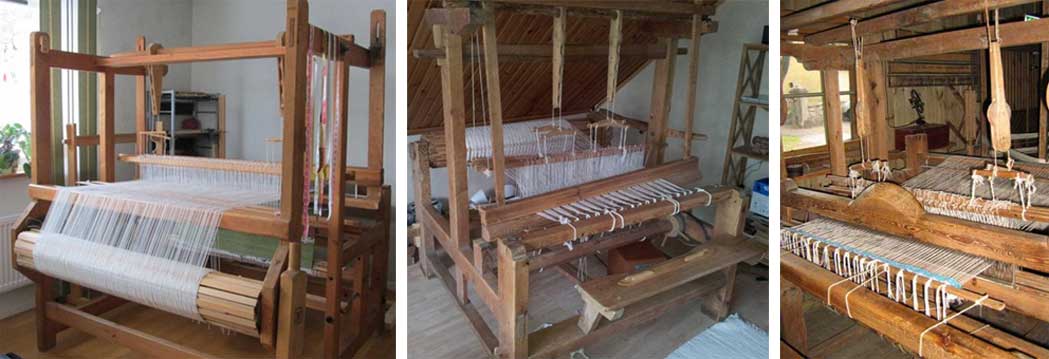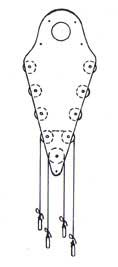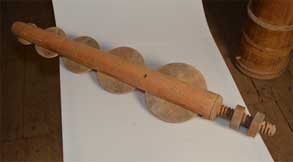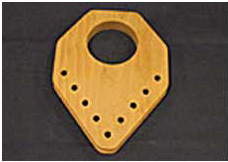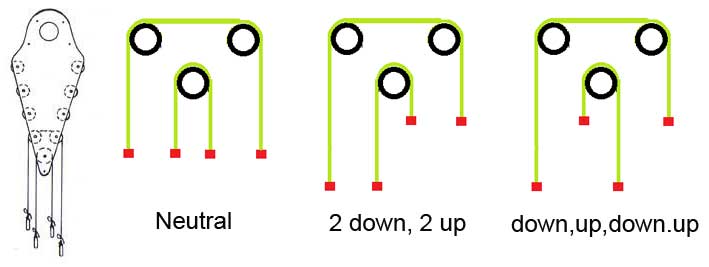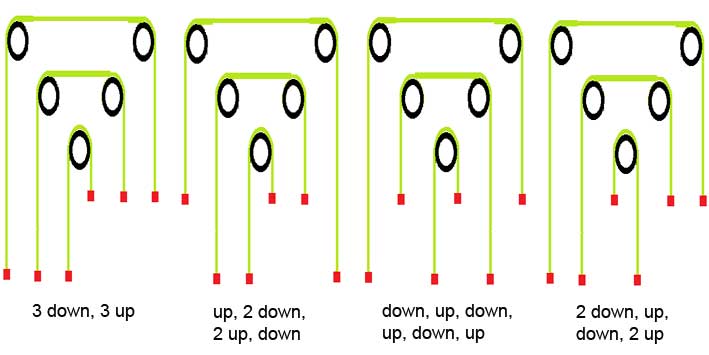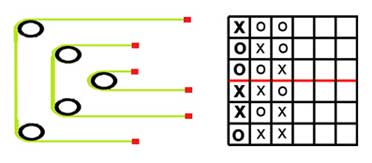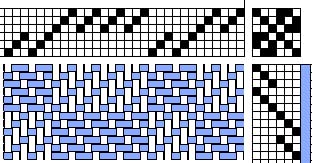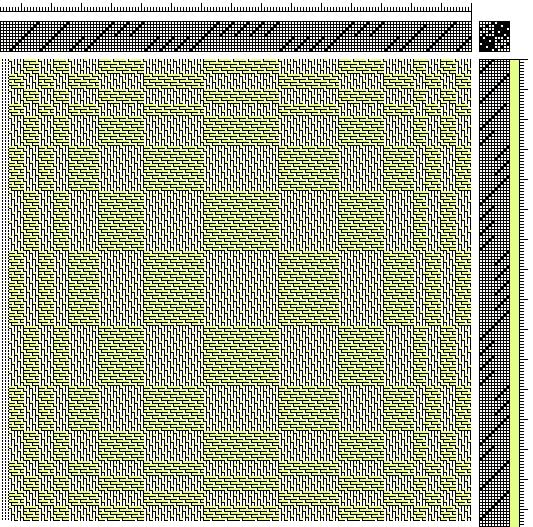The idea with dräll pulleys is to allow for 10 shafts with an easy counterbalance action: each shaft
is connected to its opposite shaft: the outermost shafts (#1 and #10, whichever way you number the shafts) are
connected over the highest pulleys, # 2 and 9 go over the next level down and so on.
This picture has only four shafts mounted, over the lowest pulley for the middle-most (is that a word?)
shafts, second level up for the numbers 1 and 4 (in this configuration).
To use the dräll pulleys as they are meant to, no horses are used – in this meaning, it is a purer counterbalance
action than is the usual 4-shaft configuration.
But: that also means restrictions – the two connected shafts (always two, one from the front, one from the back)
must work on opposites: what goes down on one end, must come up on the other.
The usual Swedish practice is, as always: do not mount more shafts than you are to use. For a four-shaft weave, hang 4 –
for an eight-shaft weave, hang 8. Shafts should all be level (use a shaft-holder to keep them level during the tying up of the treadles).

